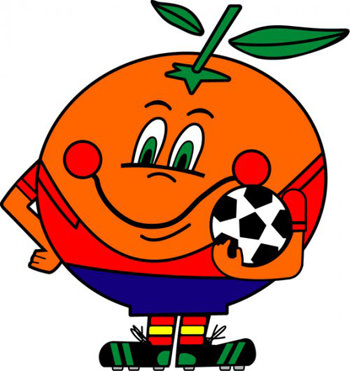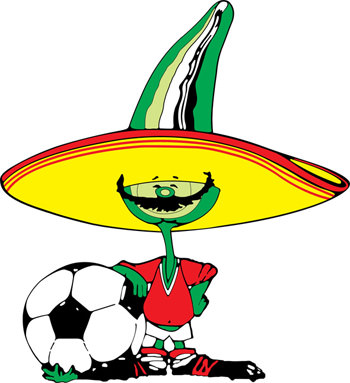The Evolution of FIFA World Cup Mascot Designs (1966-2014)
Mascots are a staple at many sporting events, including the FIFA World Cup. They serve to embody the essence of the event, as exemplified by this year’s adorable armadillo mascot.
Interestingly, the concept of mascots is relatively new, originating in 1966. The early designs were more traditional compared to today’s versions.
Understanding the history of World Cup mascots helps us appreciate the creative elements that go into making them. So, let’s dive into the fascinating journey of how World Cup mascot designs have evolved over the years.
A Look Into: The Evolution of World Cup Logo Design
The FIFA World Cup has been and will always be the most celebrated football tournament throughout the years.... Read more
England – World Cup Willie (1966)
World Cup Willie, a lion, holds the distinction of being the first official mascot for the FIFA World Cup. Designed by commercial artist Reg Hoye, who also illustrated some of Enid Blyton’s books, the mascot has an interesting backstory.
Hoye submitted this design along with three other options. The lion was not just a random choice; it was a tribute to his son Leo and also symbolizes England’s regal nature. To top it off, Willie is dressed in England’s kit, proudly representing his country.

Mexico – Juanito (1970)
Juanito serves as the quintessential Mexican football fan, adorned in Mexico’s national colors and sporting a large sombrero. He embodies the fun spirit of football.
While retaining some child-like qualities from previous designs, Juanito is more polished and relatable due to his human form.

West Germany – Tip & Tap (1974)
Following Mexico’s lead, West Germany also opted for a human mascot but took it a step further by introducing not one, but two mascots. Tip and Tap are designed to symbolize a unified Germany.
The letters ‘WM’ on Tip’s jersey stand for Weltmeisterschaft, which translates to World Cup. This, coupled with Tap’s ’74 jersey, signifies the global sporting event in question.

Argentina – Gauchito (1978)
If you’ve ever thought that the design of Gauchito bears a striking resemblance to another mascot, Juanito, you’re not alone. This design has garnered its fair share of criticism for this very reason.
However, Gauchito sets himself apart by embodying the Argentinian spirit. He dons an outfit that includes a hat, neckerchief, and whip, all of which are traditional attire for gauchos. What makes Gauchito unique is a small but noticeable detail: he covers his belly button.

Spain – Naranjito (1982)
Naranjito, whose name is a playful take on the Spanish word for orange, represents a departure from earlier human-like mascot designs. The orange is a beloved and ubiquitous fruit in Spain, and this affection was captured in the 1982 World Cup mascot.
Featuring a cartoonish style and a cheerful expression, Naranjito’s shape closely resembles the soccer ball he holds. This design choice makes him a relatable and engaging character for the audience.

Mexico – Pique (1986)
At first glance, the mascot may seem puzzling. What you’re actually looking at is a jalapeño pepper, a symbol of Mexican cuisine. The mascot’s name, derived from the term ‘Picante,’ refers to spicy sauces and peppers.
The Mexican mascot sports a sombrero and a mustache, adding a touch of humor and charm.

Italy – Ciao (1990)
Italy’s mascot takes a unique approach, featuring a name that is a common Italian greeting.
The mascot, Ciao, has a tricolored stick figure body and a soccer ball for a head. This design is the first to incorporate the soccer ball as an actual part of the mascot, and the colors represent Italy.

USA – Striker (1994)
Created by the renowned Warner Bros. Animation team, the U.S. mascot is a dog, a popular household pet in America.
Named Striker, the mascot dons the red, white, and blue colors of the United States. The energetic and playful nature of dogs aligns well with the spirit of soccer.

France – Footix (1998)
The 1998 World Cup featured a mascot designed by Fabrice Pialot, which was a cockerel. This animal is a traditional symbol of France and was well-received by the public.
The name of the mascot, Footix, is a blend of the word ‘football’ and the ‘-ix’ suffix. In terms of color, the mascot features the colors of the French flag, which are also present on the football.

Korea/Japan – Ato, Kaz & Nik (The Spheriks) (2002)
In 2002, the World Cup was co-hosted by Korea and Japan, who introduced us to Ato, Kaz & Nik. These mascots are futuristic and computer-generated, and interestingly, their colors are not related to the host countries or the event’s logo.
The mascots have a backstory involving a fictional sport called ‘Atmoball’, similar to football. Ato serves as the coach, while Kaz and Nik are players. The names were chosen through a voting process in both Korea and Japan.

Germany – Goleo VI & Pille (2006)
For the World Cup hosted by Germany, the mascot was a lion named Goleo, accompanied by a talking football named Pille. The duo was likely designed to appeal to younger audiences.
However, the choice of a lion as a mascot was criticized by many who felt that a more representative animal for Germany would have been more appropriate. Additionally, the character faced criticism for not wearing pants.

South Africa – Zakumi (2010)
South Africa elevated mascot design while staying true to the animal mascot trend. Zakumi, a name that combines ZA (South Africa’s abbreviation) and Kumi (meaning “ten” in various African languages), is a leopard.
The leopard’s simple jersey and shorts complement its intricate body design. Zakumi’s green and gold colors also represent the colors of the national team.

Brazil – Fuleco (2014)
In 2014, Brazil’s World Cup Mascot was chosen through a collaborative effort. Six Brazilian agencies submitted various designs, which were then evaluated by FIFA and the Local Organizing Committee (LOC). This led to the introduction of Fuleco the Armadillo on the Brazilian TV show, Fantástico, in 2012.
What sets Fuleco apart is its dual role. Not only does it symbolize the immense passion for football, but it also serves as a platform for environmental awareness. This is evident through Fuleco’s species, the three-banded armadillo, which is considered vulnerable. The name Fuleco itself is a blend of “football” and “ecology” in Portuguese.
